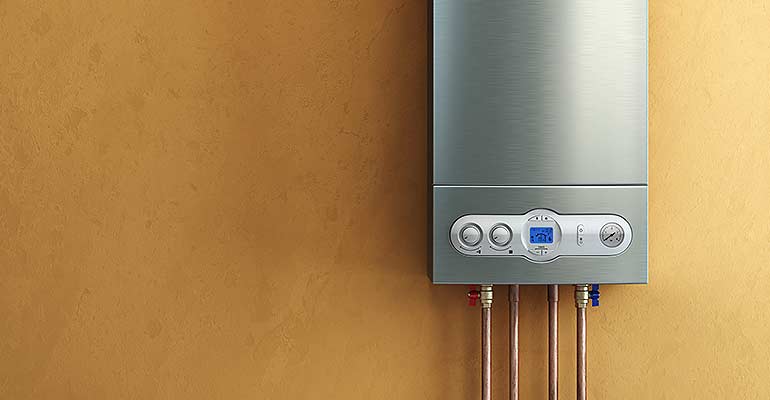Important Care Techniques for Your Home's Hot Water System
Important Care Techniques for Your Home's Hot Water System
Blog Article
How do you actually feel with regards to How to Maintain a Hot Water Heater in a Few Simple Steps?

Warm water is necessary for everyday convenience, whether it's for a rejuvenating shower or cleaning dishes. To guarantee your hot water system runs successfully and lasts much longer, regular upkeep is essential. This short article provides functional suggestions and understandings on exactly how to maintain your home's hot water system to stay clear of disturbances and expensive repair work.
Introduction
Keeping your home's warm water system may seem challenging, yet with a few straightforward actions, you can ensure it runs efficiently for many years to come. This overview covers whatever from understanding your warm water system to DIY upkeep suggestions and recognizing when to contact specialist aid.
Value of Keeping Your Hot Water System
Normal maintenance not just expands the life expectancy of your hot water system however additionally ensures it runs efficiently. Ignoring upkeep can bring about reduced performance, higher energy costs, and also premature failing of the system.
Indicators Your Warm Water System Needs Maintenance
Recognizing when your hot water system needs interest can prevent major problems. Keep an eye out for signs such as inconsistent water temperature level, strange sounds from the heater, or rustic water.
Recognizing Your Warm Water System
Before diving into maintenance tasks, it's handy to understand the fundamental elements of your warm water system. Typically, this includes the water heater itself, pipes, anode poles, and temperature level controls.
Month-to-month Maintenance Tasks
Regular regular monthly checks can help catch small concerns prior to they rise.
Purging the Water Heater
Purging your hot water heater gets rid of debris build-up, improving efficiency and prolonging its life.
Checking and Replacing Anode Rods
Anode rods avoid rust inside the storage tank. Checking and replacing them when worn is important.
Evaluating and Adjusting Temperature Level Setups
Readjusting the temperature level settings guarantees ideal performance and security.
DIY Tips for Upkeep
You can execute several upkeep jobs on your own to maintain your warm water system in top condition.
Checking for Leaks
Routinely examine pipes and connections for leakages, as these can bring about water damages and higher costs.
Checking Stress Relief Valves
Testing the pressure safety valve guarantees it operates appropriately and avoids excessive stress accumulation.
Insulating Pipes
Shielding hot water pipelines minimizes warm loss and can save power.
When to Call an Expert
While do it yourself maintenance is advantageous, some issues call for expert proficiency.
Facility Problems Needing Specialist Assistance
Examples consist of major leakages, electric problems, or if your water heater is continually underperforming.
Regular Professional Upkeep Advantages
Professional upkeep can include complete evaluations, tune-ups, and ensuring conformity with safety criteria.
Final thought
Normal maintenance of your home's warm water system is vital for efficiency, durability, and cost financial savings. By following these ideas and knowing when to look for professional help, you can ensure a trusted supply of hot water without unanticipated interruptions.
How to Maintain an Instant Hot Water Heater
Before tinkering with your hot water heater, make sure that it’s not powered on. You also have to turn off the main circuit breaker and shut off the main gas line to prevent accidents. Also turn off the water valves connected to your unit to prevent water from flowing into and out of the appliance. 2. When you’re done, you have to detach the purge valves’ caps. These look like the letter “T†and are situated on either side of the water valves. Doing so will release any pressure that has accumulated inside the valves while at the same time avoid hot water from shooting out and burning your skin. 3. When the purge valves’ caps are removed, you have to connect your hosing lines to the valves. Your unit should have come with three hoses but if it didn’t, you can purchase these things from any hardware or home repair shops. You can also get them from retail stores that sell water heating systems. Read the user’s manual and follow it to complete this task properly. When the hosing lines are connected, open the purge port’s valves. 4. You should never use harsh chemical cleaners or solutions when cleaning your unit. Make use of white vinegar instead. It should be undiluted and you’ll probably use about 2 gallons. 5. Now flush your water heater. This task should probably take about 40 minutes. We can’t give you specific directions for this because the procedure is carried out depending on the type, model and brand of your heater. With that being said, refer to the user’s manual. 6. When you’re done draining the unit, you have to turn off the purge port valves again. Remove the hosing lines that you earlier installed on each of the water valves. Put the valve caps (purge port) back in their respective places and be very careful so as not to damage the rubber discs that are found inside these caps. 7. Now that everything’s back in place, check your user’s manual again to find out how to reactivate your water heating system. 8. Once it is working, turn one of your hot water faucets on just to let air pass through the heater’s water supply pipes. Leave the tap on until water flows smoothly out of it. https://www.orrplumbing.com/blog/2014/september/how-to-maintain-an-instant-hot-water-heater/

As a serious reader on What Kind of Maintenance Do Water Heaters Need?, I imagined sharing that piece of content was worth the trouble. Sharing is good. You never know, you might be doing someone a favor. Thanks a lot for taking the time to read it.
Click On This Link Report this page